- Home
- L'amour, Louis
Education Of a Wandering Man (1990) Page 2
Education Of a Wandering Man (1990) Read online
Page 2
The books had a buff binding, a good many pictures, and fairly large print, so they must have been very general indeed.
Other books remembered from those years were Black Beauty, a similar book about a dog called Beautiful Joe (who was not beautiful at all), Little Lord Fauntleroy, Pilgrim’s Progress (which I found very dull), John Hallifax, Gentleman, and two old favorites, Cudjo’s Cave and The Little Shepherd of Kingdom Come.
My older brothers had left behind a dozen Horatio Alger novels, which I read, but I remember only three titles:
Brave and Bold, Do and Dare, and Jed, the Poorhouse Boy.
About the same time, I read at least a dozen novels by G. A. Henty, a British author. The only two recalled offhand were The Lion of the North, about Gustavus Adolphus of Sweden, and With Clive in India. Aside from teaching much more about aspects of history studied in school, they provided at least a passing familiarity with events our schools did not touch upon. These deepened my interest in history and brought not questions but rather a desire to know more about what actually happened and why.
Historical novels are, without question, the best way of teaching history, for they offer the human stories behind the events and leave the reader with a desire to know more. Due to such books, and later reading, I found that no matter what country I visited or whom I met, I knew something of the history or romance of the country, or about a person’s homeland.
My father, who was a veterinarian working mostly with horses and cattle, was a great storyteller. In small towns in those days nearly every public official had some other business, and my father was at various times a deputy sheriff, a policeman, a Juvenile Commissioner, and for many years was alderman of the First Ward, the largest in the city. At one time he even ran for mayor but was defeated by a good friend.
He told stories of his boyhood in the lumber woods, of a pet bear and deer he owned, of a Huron Indian boy with whom he played. My mother, too, told stories, usually of her relatives in Minnesota or of her father, a veteran of the Civil and Indian Wars who lived with us when I was very small.
Supposedly I was too young to remember him well, but often when we were alone he drew diagrams on a slate and told me how the great battles of histroy were fought, and about some of his own wars. I should not have remembered, but years later I could draw a diagram of how the Battle of Cannae was won, and I did not study that until later.
Before that day in Singapore I had skinned dead cattle in Texas, baled hay in New Mexico, worked as a roustabout with the Hagenbeck-Wallace Circus, and in between times had boxed a couple of exhibitions in small towns and won a few fights. I had hoboed across Texas on the Southern Pacific and shipped out to the West Indies as a seaman and, later, on another ship, to Liverpool and Manchester, England.
Returning, I had planted fruit trees near Phoenix, worked as caretaker of a mine in the Bradshaws, and spent three very rough months “on the beach” in San Pedro.
Riding a freight train out of El Paso, I had my first contact with the Little Blue Books. Another hobo was reading one, and when he finished he gave it to me.
The Little Blue Books were a godsend to wandering men and no doubt to many others.
Published in Girard, Kansas, by Haldeman-Julius, they were slightly larger than a playing card and had sky-blue paper covers with heavy black print titles.
I believe there were something more than three thousand titles in all and they were sold on newsstands for 5 or 10 cents each. Often in the years following, I carried ten to fifteen of them in my pockets, reading when I could.
Among the books available were the plays of Shakespeare, collections of short stories by De Maupassant, Poe, Jack London, Gogol, Gorky, Kipling, Gautier, Henry James, and Balzac.
There were collections of essays by Voltaire, Emerson, and Charles Lamb, among others.
There were books on the history of music and architecture, painting, the principles of electricity; and, generally speaking, the books offered a wide range of literature and ideas. I do not recall exactly, but I believe the first Blue Book given me on that freight train was Robert Louis Stevenson’s Dr. Jekyll and Mr.
Hyde.
In subsequent years I read several hundred of the Little Blue Books, including books by Tom Paine, Charles Darwin, and Thomas Huxley.
To properly understand the situation in America before the Depression, one must realize there was a great demand for seasonal labor, and much of this was supplied by men called hoboes.
Over the years the terms applied to wanderers have been confused until all meaning has been lost. To begin with, a bum was a local man who did not want to work. A tramp was a wanderer of the same kind, but a hobo was a wandering worker and essential to the nation’s economy.
In the days before the big combines it was the hobo who “shocked” the grain, picking up the bundles dropped by a binder and stacking them to be picked up by men on hayracks.
Many hoboes would start working the harvest in Texas and follow the ripening grain north through Oklahoma, Kansas, and Nebraska into the Dakotas. During the harvest season, when the demand for farm labor was great, the freight trains permitted the hoboes to ride, as the railroads were to ship the harvested grain and it was in their interest to see that labor was provided.
Often this lot of wandering workers was mixed with college boys earning enough money for school or working to get in shape for football. Some simply drifted because they enjoyed the life, the work in the open fields, the variety of towns and experiences, and the chance to see the country. By and large these harvest workers were Anglo-Saxon and Irish, as most of the early pioneers had been, but there was a good mixture of blacks and immigrants of European extraction.
Latinos were rarely seen except in the southwestern states.
The Depression brought a different kind of drifter to the railroads and highways, and only one who bridged that period can grasp the depth of the change. The Depression hoboes had little of that carefree, cheerful attitude of the earlier hobo. They were serious, often frightened men. They had come from towns where work was no longer available, and were, as we all were, seeking work. Often these men had families to whom they wrote when they could afford the postage.
The criminal element in either segment was small indeed. The fact of the matter is that poor men do not often steal, and when they do, it is petty theft, something to eat or perhaps an item of clothing to keep them from the cold.
Thieves are usually those who have something and want more. They steal not for food but for flashier clothers, a better watch, a handsome car. They steal for money to spend on flash, on women or drugs. Hungry men are without power, without leverage, and so are vulnerable to any kind of bullying and are constantly suspected of crimes they rarely commit.
The years before the Depression were the heyday of the hobo. His labor was much in demand and he, loving to wander, rarely stayed long on a job.
For years there had been a surplus of labor in the United States, but it was largely unrecognized because so many were constantly shifting jobs. There were at least four or five men for every job, but with the constant turnover, some of them were working all the time; when the Depression came it was like a game of musical chairs.
Those who had the jobs stayed with them, while the others were left adrift in a country without work.
During the knockab years the hobo acquired a literature of his own, stories, poetry, and songs passed on by word of mouth, only occasionally printed or recorded. Among the songs best remembered, although there were hundreds now lost, were “Hallelujah, I’m a Bum,” “The Bum Song,” “The Dying Hobo,” “Big Rock Candy Mountain,” and “The Hype Song.”
The folklore of the hobo has been studied but only partly explored, and is extensive indeed. The chapters on famous hoboes, tramps, and railroad detectives have been largely overlooked because too few of the old hoboes are left, and those who know the old stories are rare. The contemporary hobo is a different type entirely, with only a few similarities. For
a short time here and there I lived a part of that growing folklore, seeing it at first hand.
Among the poems known by many were “Toledo Slim,” “The Girl with the Blue Velvet Band,” the well-known “Face on the Bar-room Floor,” “Down in Lehigh Valley,” and “The Lure of the Tropics.”
One remembered quatrain is typical:
I’ve juggled a tray in a New York caf`e, Hopped bells in a hotel in Chi.
I’ve carried a pack down the BandO track, And hopped Red Ball freights on the fly.
Another, of the same vintage:
I’ve clerked in Kansas City, Sold insurance in St. Paul, Peddled books in Dallas, Texas, And gone hungry in them all.
My intention had been to write, and consequently I had made no effort to acquire a trade. Naturally, living such a life one picks up certain knacks and skills but not enough to become expert at anything.
All I had to offer was considerable physical strength and two hands, but for most jobs it was all that was required. I carried a hod, mixed concrete, shoveled sand or gravel, and dug ditches.
All the while I read. There was no plan, nor at the time could there be. One had to read what was available, and it had been so from the beginning.
Back in Jamestown there was a set of books called The Rover Boys, and I read however many there were. Several friends were reading them at the same time. We also read a series by Joseph A. Altsheler on the Civil and Revolutionary Wars.
Shortly before I entered the seventh grade I got my first job, the only one I was ever to get through influence or knowing somebody.
In this case it was a friend of my father’s who was Vice-President of the Midland Continental Railroad (peggy Lee’s father worked for the same company), a small railroad that serviced a farming area. I had remarked to him that I was going to get my father to buy me a bicycle.
“Why don’t you buy it yourself?” he asked.
Astonished, I told him I did not have any money. “Get a job and earn it,” he suggested.
I was not quite twelve at the time and the idea had never occurred to me. He turned to a friend who was Secretary and Treasurer of the same railroad and asked, “What kind of jobs are there for youngsters?”
He suggested I work as a messenger boy.
My father’s friend invited me up to his office and dictated a letter to the Western Union recommending me for the job. The other man, who was also head of the local Chamber of Commerce, signed it as well, as did the County Engineer. Needless to say, I got the job.
At first, having no bicycle, I delivered the messages on foot, which called for a lot of walking. The job itself was a learning experience—in more ways than one. There were several typewriters around the place and I began typing on one of the spare machines. About the same time, one of the other messengers introduced me to pulp adventure magazines.
These were never found in my home, as my mother did not approve of them, and I doubt if my brothers or sisters ever looked at one until some of my own stories began to appear there, much later.
It was in the magazines that I first encountered Edgar Rice Burroughs and his stories “The Princess of Mars,” “The Gods of Mars,” and “The Warlords of Mars.” (much later I had a Colorado friend who named his two burros Edgar and Rice.)
Also at this time there was a magazine called Science and Invention, published by Hugo Gernsback, a name famous to all who know science fiction. Gernsback featured popular articles on various aspects of science, but he did more than that, for in the pages of Science and Invention he published the first modern stories of science fiction. Later, when the audience demanded it, he began to publish Amazing Stories, and the rest is history.
Reading a combination of science fact and fiction led me to Professor Percival Lowell’s books on Mars, the planet he was studying from his Lowell Observatory near Flagstaff.
These were not, of course, the first nonfiction books I had read. The first was, I believe, a book called The Genius of Solitude, which I found in our Alfred Dickey Library in my hometown.
About that time I had decided I was not learning fast enough in school (i was twelve), and I was enormously curious about what was available.
The Genius of Solitude devoted several chapters to various thinkers, as I recall, but the only one I remember now is Socrates.
Interested in everything, I also found in our library a very good book on the history of flying, going back to the beginnings of kite flying in China and Japan, making hot-air balloons out of gold beater’s skin, and going on to the German who made more than seven hundred flights with gliders, but crashed and was killed on the eve of his first powered flight.
There was also a good history of the submarine, and somewhere along the line I dipped into books on botany, geology, mineralogy, and more.
As those who read will understand, once my years at home were ended, I had little choice about what I read, for I had to accept what was available. When I found a library, I could choose, but many of the books I read during those knockab years were what could be found in bunkhouses, ships’ fo’c’sles (crew’s quarters), and such places. Sometimes the discoveries were real gems; more often they were the casual reading of wandering men. Whatever the book, a reader reads.
There is no reason why anyone cannot get an education if he or she wants it badly enough and is persistent. Most cities have libraries, and often state libraries will mail books to a reader. Books are available on every conceivable subject and there are many very good “how to” books from which one can learn the basics of a trade.
My great good fortune was that from the beginning I was aware of books and their availability. But until I was eighteen or nineteen I simply read whatever I could find, with no preconceived notion of what I wanted to learn or become.
When I did settle down to acquire the rudiments of an education, the courses of study I chose were, I am sure, not those that would have been prescribed for me by any educator of whom I know, and it has been my good fortune to know a good many in these later years.
We probably had no more than two or three hundred books in my home when I was a child, but the library was available and we all used it constantly. I read Lorna Doone (a great favorite of my mother’s), Kingsley’s Westward Ho!, Jane Porter’s The Scottish Chiefs, Ivanhoe by Sir Walter Scott, as well as Ben Hur and The Fair God by Lew Wallace.
When I was about thirteen I discovered Alexandre Dumas. There had been talk at home of The Count of Monte Cristo and The Three Musketeers, and I had read both. It was a great day when I discovered on the shelves of the library a set of forty-eight volumes by Dumas, and I read them, every one.
One book has always led to another with me, as I suspect it does with many, and I went on to read Victor Hugo’s Les Mis@erables, The Hunchback of Notre Dame, The Man Who Laughs, and Toilers of the Sea. The last-named was my favorite, for reasons I do not recall, unless it was because of man’s titanic struggle with the sea. The idea of one man against the elements has always fascinated me, even before I had such experiences of my own.
Somewhere along the line I read a half-dozen novels by James Fenimore Cooper; and as with Balzac, enjoyed them.
About that time my education took another direction. My father and two older brothers had boxed, and I grew up knowing the rudiments. In the YMCA gym I worked out a few times with Labe Safro, who had been a crack welterweight and middleweight fighter during the days of Mike Gibbons, Mike O’Dowd, and Kid Graves. Labe was umpiring baseball in Jamestown and worked out every day.
He was a phenomenal bag puncher and had punched bags in vaudeville, keeping ten bags going at once.
And then the Petrolle boys came to town.
Do what thy manhood bids thee do, From none but self expect applause;
He noblest lives and noblest dies Who makes and keeps his self-made laws.
—Sir Richard Francis Burton Pete Petrolle was a lightweight fighter out of Schenectady, New York. His manager at the time was a former boxer who owned and operated a caf
`e in Jamestown. His name was Lee Shrankel; he was also, temporarily, manager of Pete’s younger brother, Billy.
Pete was a good, tough, knowing fighter who had already become as good as he was ever to get.
Billy, on the other hand, was just beginning a career that would take him to the top, where he would defeat several champions in over-weight matches (so the title was not at stake) but was never to win a championship himself.
From featherweight to welterweight he fought all the good ones, and many of them were very, very good.
At the time there were at least twenty good fighters for every one there is now, and it was about the only way a young man could come off the streets and become somebody. Now, with basketball and football paying enormous sums, there are many other ways to reach the top, and even common labor pays more in a day than one received in a week in the 1920’s.
Competition in the ring was very tough and a boy had to be good to get anywhere at all. Usually that meant a year or two fighting four-or six-round bouts before a fighter got a shot at anything longer. During those years he was learning, discovering how to cope with the different styles of fighting, and refining his own.
Probably the last fighter who went through that mill was Sugar Ray Robinson, who was also one of the greatest.
How I met Pete Petrolle I do not recall, but evidently I heard he was looking for somebody to spar with. I was fourteen, but tall, with a good reach, and I knew enough about boxing to take care of myself. In the next few weeks I learned a lot more. I would guess I worked at least fifty rounds with Pete on various days before I met Billy, and then I worked with them both. They took it easy with me, but I enjoyed the workouts and was learning rapidly.
At the time a boxing magazine was published in St. Paul, Minnesota (one of the great fight towns in its day). It was printed on pink paper like the more famous Police Gazette and was called the Boxing Blade. Aside from articles on boxers and boxing, old and new, it also published the decisions in fights all over the world, These decisions usually covered two or three pages in relatively fine print, and I was an avid reader of this weekly, with a good memory for who had fought whom and the result. I also learned how certain fighters reacted to southpaws, fancy-dan boxers, and the like.

 Last Stand at Papago Wells (1957)
Last Stand at Papago Wells (1957) the Trail to Crazy Man (1986)
the Trail to Crazy Man (1986) Shalako (1962)
Shalako (1962)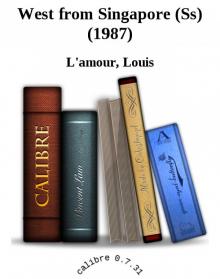 West from Singapore (Ss) (1987)
West from Singapore (Ss) (1987) Last Of the Breed (1986)
Last Of the Breed (1986) Dark Canyon (1963)
Dark Canyon (1963)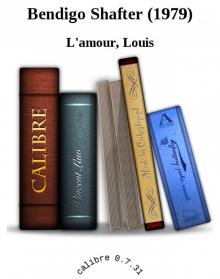 Bendigo Shafter (1979)
Bendigo Shafter (1979) Riding for the Brand (Ss) (1986)
Riding for the Brand (Ss) (1986) Guns Of the Timberlands (1955)
Guns Of the Timberlands (1955) the Iron Marshall (1979)
the Iron Marshall (1979) the Broken Gun (1967)
the Broken Gun (1967)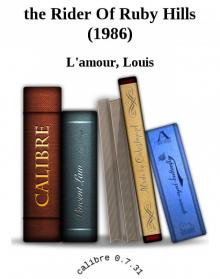 the Rider Of Ruby Hills (1986)
the Rider Of Ruby Hills (1986)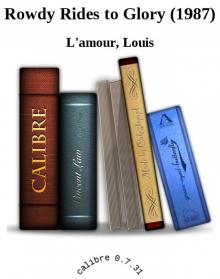 Rowdy Rides to Glory (1987)
Rowdy Rides to Glory (1987) the First Fast Draw (1959)
the First Fast Draw (1959) Utah Blain (1984)
Utah Blain (1984)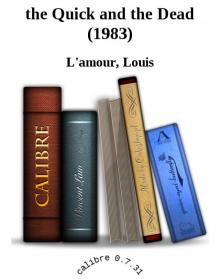 the Quick and the Dead (1983)
the Quick and the Dead (1983) Tucker (1971)
Tucker (1971)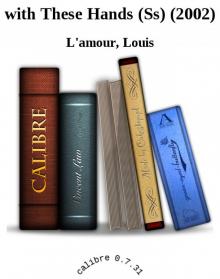 with These Hands (Ss) (2002)
with These Hands (Ss) (2002) May There Be a Road (Ss) (2001)
May There Be a Road (Ss) (2001) Night Over the Solomons (Ss) (1986)
Night Over the Solomons (Ss) (1986) the Haunted Mesa (1987)
the Haunted Mesa (1987) Matagorda (1967)
Matagorda (1967) End Of the Drive (Ss) (1997)
End Of the Drive (Ss) (1997) Riders Of the Dawn (1980)
Riders Of the Dawn (1980) the Key-Lock Man (1965)
the Key-Lock Man (1965) Taggart (1959)
Taggart (1959)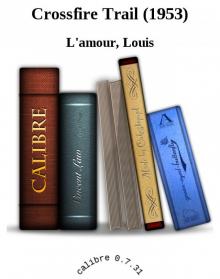 Crossfire Trail (1953)
Crossfire Trail (1953) Education Of a Wandering Man (1990)
Education Of a Wandering Man (1990) the Proving Trail (1979)
the Proving Trail (1979) Kilrone (1966)
Kilrone (1966) the Man from Skibbereen (1973)
the Man from Skibbereen (1973) the Tall Stranger (1982)
the Tall Stranger (1982) Bowdrie (Ss) (1983)
Bowdrie (Ss) (1983) Catlow (1963)
Catlow (1963)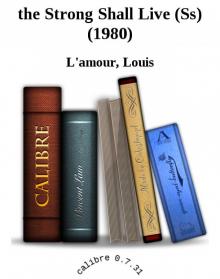 the Strong Shall Live (Ss) (1980)
the Strong Shall Live (Ss) (1980) Fallon (1963)
Fallon (1963) the Empty Land (1969)
the Empty Land (1969) the Cherokee Trail (1982)
the Cherokee Trail (1982) Beyond the Great Snow Mountains (Ss) (1999)
Beyond the Great Snow Mountains (Ss) (1999) Kid Rodelo (1966)
Kid Rodelo (1966)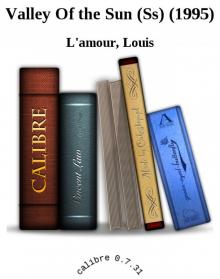 Valley Of the Sun (Ss) (1995)
Valley Of the Sun (Ss) (1995) Radigan (1958)
Radigan (1958) Law Of the Desert Born (Ss) (1984)
Law Of the Desert Born (Ss) (1984) Chancy (1968)
Chancy (1968) the Burning Hills (1956)
the Burning Hills (1956) Son Of a Wanted Man (1984)
Son Of a Wanted Man (1984) Killoe (1962)
Killoe (1962) Showdown On the Hogback (1991)
Showdown On the Hogback (1991) the Shadow Riders (1982)
the Shadow Riders (1982) to Tame a Land (1955)
to Tame a Land (1955) Brionne (1968)
Brionne (1968) Off the Mangrove Coast (Ss) (2000)
Off the Mangrove Coast (Ss) (2000) Showdown at Yellow Butte (1983)
Showdown at Yellow Butte (1983) How the West Was Won (1963)
How the West Was Won (1963)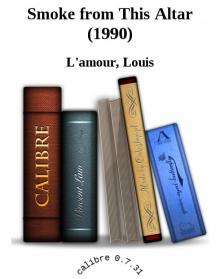 Smoke from This Altar (1990)
Smoke from This Altar (1990) Comstock Lode (1981)
Comstock Lode (1981) Flint (1960)
Flint (1960) Hondo (1953)
Hondo (1953) Reilly's Luck (1970)
Reilly's Luck (1970) No Trouble for the Cactus Kid
No Trouble for the Cactus Kid Bowdrie's Law (Ss) (1983)
Bowdrie's Law (Ss) (1983)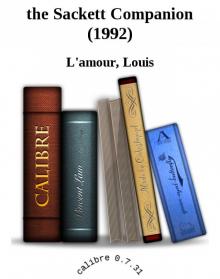 the Sackett Companion (1992)
the Sackett Companion (1992) the Man Called Noon (1970)
the Man Called Noon (1970) Buckskin Run (Ss) (1981)
Buckskin Run (Ss) (1981) Down the Long Hills (1968)
Down the Long Hills (1968) Kiowa Trail (1964)
Kiowa Trail (1964) Long Ride Home (Ss) (1989)
Long Ride Home (Ss) (1989) Lonigan (Ss) (1988)
Lonigan (Ss) (1988) Dutchmans Flat (Ss) (1986)
Dutchmans Flat (Ss) (1986) Passin' Through (1985)
Passin' Through (1985) the Hills Of Homicide (Ss) (1987)
the Hills Of Homicide (Ss) (1987) Silver Canyon (1956)
Silver Canyon (1956) the Californios (1974)
the Californios (1974) Where the Long Grass Blows (1976)
Where the Long Grass Blows (1976) Callaghen (1972)
Callaghen (1972) Under the Sweetwater Rim (1971)
Under the Sweetwater Rim (1971) the Lonesome Gods (1983)
the Lonesome Gods (1983) Heller with a Gun (1955)
Heller with a Gun (1955)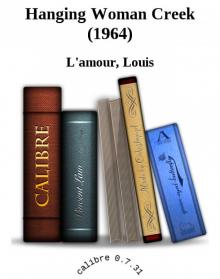 Hanging Woman Creek (1964)
Hanging Woman Creek (1964) High Lonesome (1962)
High Lonesome (1962) There's Always a Trail (1984)
There's Always a Trail (1984) the High Graders (1965)
the High Graders (1965) Conagher (1969)
Conagher (1969) from the Listening Hills (Ss) (2004)
from the Listening Hills (Ss) (2004) Monument Rock (Ss) (1998)
Monument Rock (Ss) (1998)